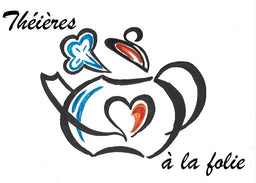Summary :
Whose mother is our good clay, our earth: as far as we can follow our ancestors, we understand that they quickly discovered pottery and its possibilities.
Clay tableware is at the first stage, it undergoes nothing other than firing to make it stronger.
Afterwards, ceramics encompasses all the different cooking methods which result in earthenware, stoneware, porcelain. Nowadays, it is true that our manufacturers no longer really bother with the nuance of these words.
However, some differences can be noted with the naked eye.
Porcelain, like stoneware, with a high silica content, vitrifies when fired and is less porous, more solid and with a lower humidity level;
We recognize porcelain by its finesse, see its translucence, its often white color. You can also recognize it by its slightly metallic sound when you tap it with a spoon.
Sandstone is thicker, a little grainy, and often in the natural tones of clay: gray, white, cream, black. Its look is more authentic, more rustic.
Earthenware or ceramic results from a second firing to “glaze” it, it is often shiny and colorful, of moderate thickness, it can however turn black in chipped areas.
In short, there is something for everyone, and frankly, all these words no longer matter; We just have to indulge ourselves by trusting our senses.


